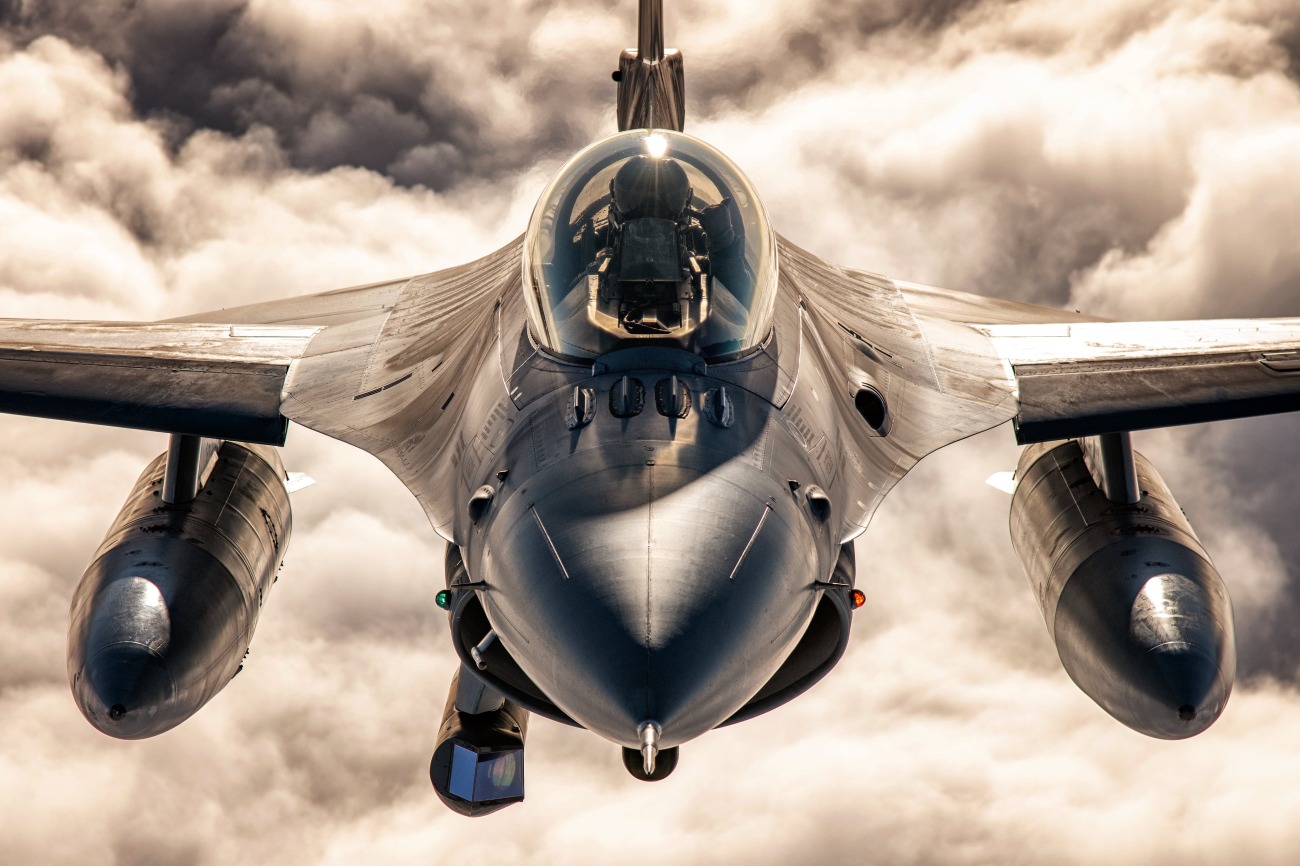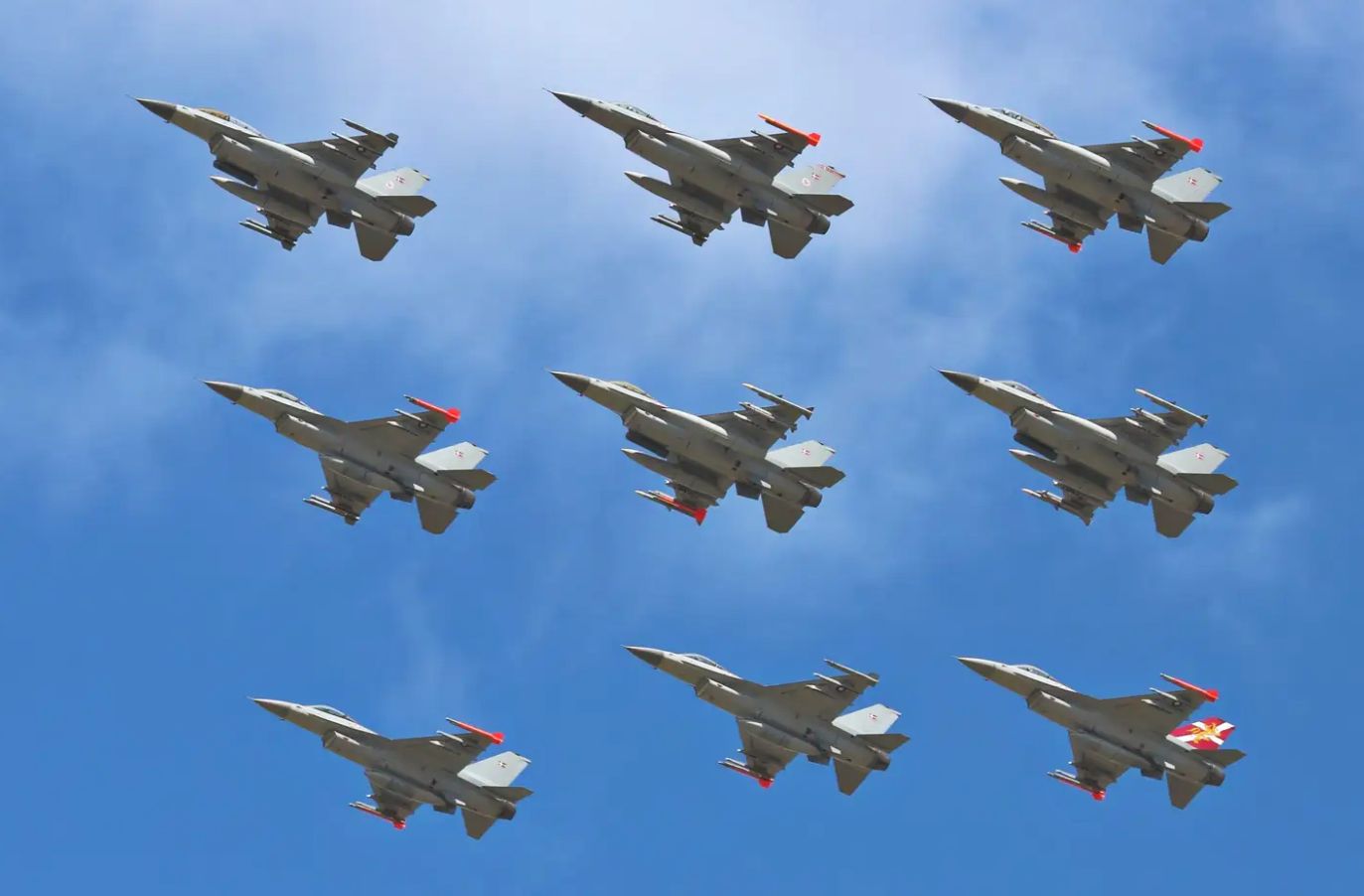The Ukraine Armed Forces will be strengthened with US-made F-16 fighter jets from NATO allies, which can be used to target Russian installations. Will the addition of the F-16s in its armory give Ukraine the edge that it needs to win the war against Russia?
NATO Secretary General Jens Stoltenberg has announced that once Ukraine acquires US-made F-16 fighter jets from its allies, the nation will have the authority to deploy these aircraft to target legitimate Russian military targets beyond Ukraine’s borders.
Stoltenberg made this statement during an interview with Radio Free Europe/Radio Liberty. When questioned about the timeline for Ukraine’s deployment of F-16 fighter jets, Stoltenberg responded that providing a precise timeframe was not possible.
Stoltenberg said that each ally of Ukraine retained the autonomy to decide whether to transfer fighter jets to Kyiv or not. However, he underscored that all provided F-16s can be leveraged by Ukraine for self-defense, including targeting legitimate Russian military installations beyond Ukrainian borders.
The NATO Secretary General stressed the importance of timely delivery, emphasizing that well-trained pilots and maintenance crews were crucial to maximize the effectiveness of the fighters.
“So I think we should listen to military experts exactly when we’re ready or when allies are ready to start sending and delivering F-16s. The faster, the better,” Stoltenberg said.

Recent reports indicate that the first batch of Ukrainian pilots is set to graduate from F-16 training by summer, following rigorous training in the United States.
Last summer, the Netherlands, Denmark, and Norway pledged to transfer American fighters to Ukraine, with the Netherlands and Denmark committing to provide 18 and 19 combat aircraft, respectively.
Norway’s contribution, however, remains unspecified. The United States has pledged approval for aircraft transfer upon the completion of pilot training.
The Belgian government has also agreed to provide Ukraine with an undisclosed number of F-16 fighters. However, the delivery will commence in 2025. Some view this decision as a compromise among the political factions within the country’s ruling coalition.
Meanwhile, on February 22, Denmark’s Defense Ministry announced plans to deliver the first batch of F-16 fighter jets to Ukraine as early as this summer, pending necessary conditions.
Lithuanian Defense Minister Arvydas Anusauskas and an unnamed European official suggested that Ukraine could receive its initial F-16s as soon as June, according to the Foreign Policy magazine.
Could F-16s Turn The Tide For Ukraine?
Throughout the ongoing war, Ukraine, facing a significant aerial disadvantage, has resorted to using surface-to-air missiles to keep Russian aircraft at bay. The introduction of modern aircraft is hoped to extend this reach, target radar transmitters more effectively, and counter cruise missiles.
Western military officials and experts, however, have cautioned that the addition of F-16s to Ukraine’s fleet will not immediately alter the course of the conflict. Surface-to-air missiles continue to pose a significant threat, and the condition of Ukraine’s runways poses additional challenges.
Nevertheless, the F-16s represent an upgrade over Ukraine’s current fleet, primarily composed of aging Soviet-era aircraft. They are expected to enhance Ukraine’s military capabilities and foster closer integration with Western allies, reducing dependence on outdated enemy-built hardware.

The F-16s will either augment or replace Ukraine’s existing fleet of MiG-29s, Su-24s, and Su-25s, which date back to the Cold War era. Despite Ukraine’s innovative efforts to integrate Western weapons into these older aircraft, the F-16s offer superior performance.
The F-16 also boasts a larger weapon-carrying capacity than the MiG-29, Su-27, and Su-25, and is roughly equivalent to Ukraine’s tactical bomber, the Su-24, in this regard.
Even so, Ukrainian military officials have noted that the effectiveness of the F-16s may be somewhat diminished due to Russia’s ongoing upgrade in air defense systems. Russian fighter jets and surface-to-air missile systems, particularly the S-400, are expected to pose significant challenges.
Leon Hartwell, a senior research fellow at the London School of Economics and Political Science (LSE), emphasized that Russia’s advanced air defense systems and fighter jets will continue to threaten F-16 operations. He doubts that the F-16s alone can decisively change the battlefield dynamics in Ukraine’s favor.
While acquiring F-16s is important for Ukraine, Hartwell stresses that addressing other critical military needs, such as unmanned aerial vehicles, artillery ammunition, and electronic warfare capabilities, is equally vital for the Ukrainian Armed Forces.
Further, Ukraine will have to prioritize building a skilled maintenance team, recognizing its crucial role in ensuring the continuous operation of F-16s, especially in demanding operational conditions.
If support plans are not put into action, there is a risk of the aircraft experiencing accelerated deterioration, making them vulnerable to Russian air-to-surface missiles and effectively rendering them costly, immobile targets.
- Contact the author at ashishmichel(at)gmail.com
- Follow EurAsian Times on Google News




